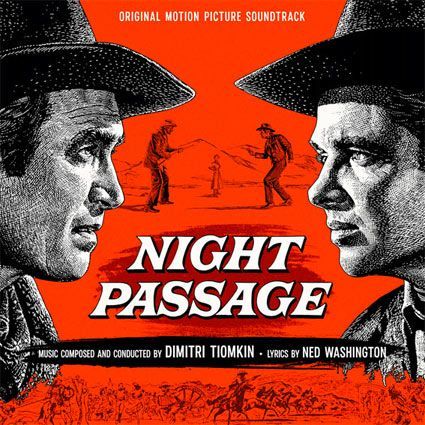The Story on Page One

Label: Intrada Special Collection
Catalogue No: Volume 6
Release Date: 2002
Total Duration: 42:26
Also contains music from: The Reward
Volume 6 of Intrada’s limited edition collector’s issues proffers two little known Elmer Bernstein scores, restored from master tracks stored at 20th Century Fox. The two films are vintage Bernstein, composed during his heyday of the late ’50s and early ’60s. THE STORY ON PAGE ONE (1959) is a Rita Hayworth / Tony Franciosa / Gig Young courtroom drama about a wrongly accused couple’s day in court, directed by noted playwright Clifford Odets. Bernstein described the director’s desires for the score as being “an angular, muscular score.” The composer complied in his best fashion. The music is dramatic and assertive, brass intoning harshly over timpani and hard-fingered piano (“Main Title / Freeway”) in a very strident statement of force, against which a soaring violin melody plays. The mix of the melodic strings and the harsh, percussive measures of the brass and piano emphasize the dichotomy of tension and passion found in the film. It’s a thrilling opener. “Jo’s Indifference” is a cool dramatic piece built around a jazzy saxophone; “Night Rendezvous” is a compelling mysterioso for flutes over pulses of timpani, segueing into the soaring violin love theme, and then back again.
THE REWARD (1965) was an obscure Western starring Max Von Sydow, Yvette Mimieux and Efrem Zimbalist Jr. But this is hardly the soaring, heroic Western music of MAGNIFICENT SEVEN or THE SCALPHUNTERS. The score is even more sparse than the occasionally melodic PAGE ONE, emphasizing acoustic guitar (the film is set in Mexico), very subdued (director Serge Bourguignon had it in mind to make a nearly silent film, so he desired very little music from Bernstein) and often quite atonal (“The Desert / The Camp / Ruins of Hacienda”). Only in “Lopez Goes After the Horse” does Bernstein let loose with the rhythm he is known for, but even this is held in check by the cheerless atonality of the surrounding ambience. In this approach, Bernstein creates a splendidly oppressive atmosphere of bleak desperation, mirroring the desolate, discordant style with which the story is told.
Source cues and alternate tracks are included from both scores. The CD is nicely packaged by Intrada with characteristically thorough liner notes by the perceptive Jon Burlingame and a note about the restoration by Douglass Fake. Sound quality is passable for its age – the fidelity has lost some of its luster and there is some wow noticeable in the sustained string passages of “Maybe Violets” and, as noted by Fake, in “End Title”- but it’s still a wonderful composition from one of the masters of its day.
Randall D. Larson – Originally published in Soundtrack Magazine Vol.21 / No.83 / 2002



